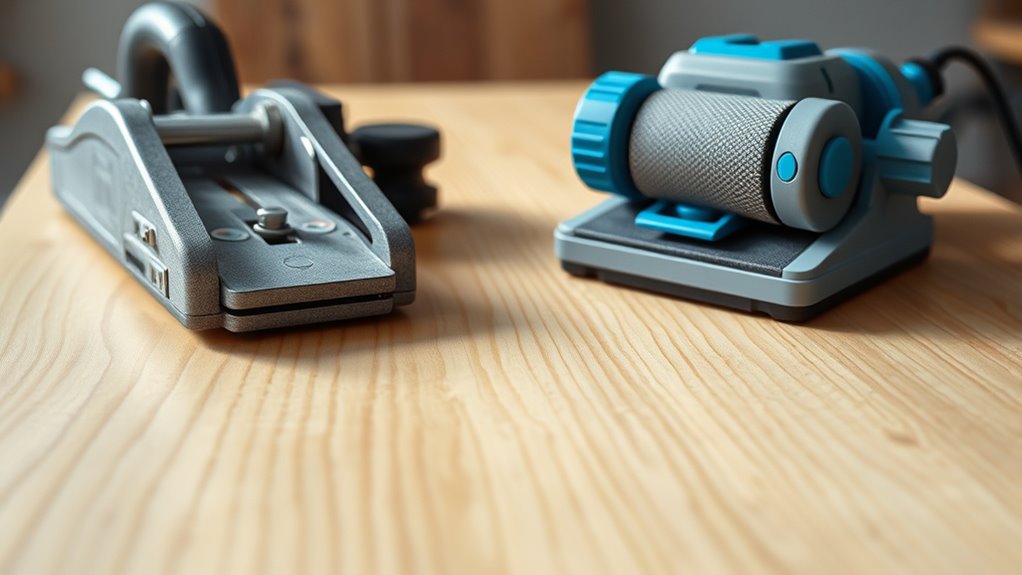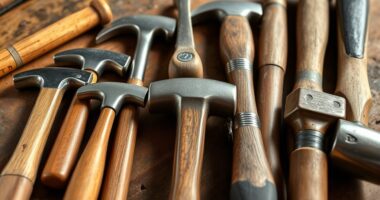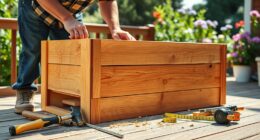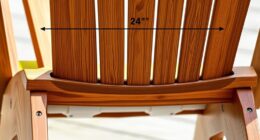Use a planer first to remove thick, rough layers and flatten your wood quickly. Once the bulk is gone, switch to a drum sander for fine smoothing and achieving a polished surface. Knowing when to use each tool helps you work efficiently and get professional results. If you want to understand the best workflow and how these tools complement each other, explore further details below.
Key Takeaways
- Use a planer first to remove thick material and flatten rough or uneven surfaces efficiently.
- Switch to a drum sander for fine finishing and achieving a smooth, polished surface.
- Planers are ideal for bulk material removal, while drum sanders excel at detailed surface refinement.
- Follow planer use with a drum sander to eliminate scratches and prepare the wood for finishing.
- Proper dust collection is essential during both processes to ensure safety and optimal surface quality.
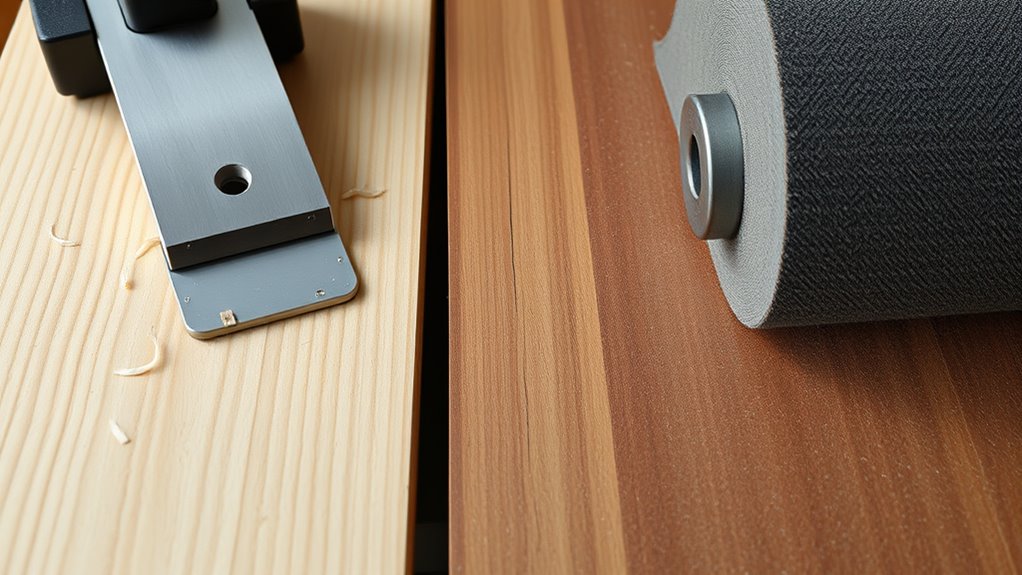
When working on woodworking projects, understanding the differences between a planer and a drum sander is essential for achieving smooth, accurate results. Both tools serve to refine your wood surfaces, but they do so in different ways, especially when it comes to grain removal and finish smoothing. Knowing when to use each will help you optimize your workflow and produce professional-quality pieces.
Understanding when to use a planer versus a drum sander optimizes your woodworking results.
A planer excels at removing thick layers of material quickly and effectively, making it ideal for flattening rough-sawn lumber or reducing the thickness of your boards. Its main strength lies in its ability to cut deep into the wood, removing large amounts of material with each pass. When your goal is to level uneven surfaces or strip away warped edges, a planer is your go-to tool. It works by feeding the wood through rotating blades that shave off layers, which means it’s great at grain removal—especially for initial stock preparation. However, because of its aggressive cutting action, a planer can leave a surface with a somewhat rough texture that needs further finishing.
On the other hand, a drum sander is designed to provide finish smoothing rather than bulk material removal. It uses a rotating drum covered with abrasive paper to gently sand the surface of your wood, producing a fine, smooth finish. When your project calls for delicate, precise smoothing—such as preparing a surface for staining or finishing—a drum sander is preferable. It’s especially useful for finer work, like removing minor imperfections or achieving a perfectly flat surface after initial planing. Unlike a planer, which cuts deep into the wood, a drum sander removes small amounts of material gradually, giving you more control over the finish quality. This makes it excellent for final passes, ensuring a smooth, even surface free of scratches or rough spots. Additionally, dust collection is crucial when using either tool to maintain a clean workspace and achieve optimal results.
While both tools can be used in tandem, the key is understanding their roles. Start with a planer to remove excess material and straighten rough surfaces. Once you’ve achieved the desired thickness and flatness, switch to a drum sander to refine the surface and eliminate any remaining imperfections. This combination allows you to handle both grain removal and finish smoothing effectively, saving time and improving the overall quality of your work. Remember, using a planer first sets the stage by removing the bulk of the material, while the drum sander perfects the surface, giving you a beautifully smooth, ready-to-finish piece.
Frequently Asked Questions
Can Both Tools Be Used for Finishing Surfaces?
Yes, both tools can be utilized for surface smoothing and improving finish quality. A planer efficiently removes rough or uneven material, giving you a smooth, flat surface, especially on thick lumber. A drum sander, however, is better for achieving fine finish quality and delicate surface smoothing, especially on thinner or detailed pieces. Using both tools in tandem ensures a professional, polished finish on your project.
Which Tool Is Safer for Beginner Woodworkers?
If you’re a beginner, a drum sander is safer because it offers beginner-friendly features like controlled feed rates and less risk of kickback. Safety considerations favor the drum sander, making it easier to operate while reducing accidents. While planers can be powerful, they require more experience to handle safely. Focus on safety considerations, choose beginner-friendly features, and start with the tool that minimizes risks as you build your skills.
Do They Require Different Maintenance Routines?
Yes, they require different maintenance routines. You should regularly check and replace blades on both tools, but planers need frequent belt and motor inspections, while drum sanders require cleaning of the drum and belts. Dust collection requirements differ too; planers produce more chip debris, so keep your dust collection system clean and well-maintained. Proper upkeep keeps both tools running smoothly and extends their lifespan, ensuring safe, efficient operation.
Are There Specific Materials Better Suited for Each Tool?
You’ll find that certain wood materials shine brighter with each tool. For example, softwoods like pine or cedar are perfect for planers, transforming rough lumber into smooth planks in a flash. Hardwoods like oak or maple need the finesse of a drum sander to avoid gouges and get that flawless finish. Surface preparation techniques matter—always start with proper sanding and verify your wood material suitability matches the tool, or risk a woodworking disaster!
How Do Their Costs Compare Over Time?
Over time, a planer generally offers better cost efficiency because it handles rough stock, reducing the need for multiple tools. A drum sander, while more expensive initially, can be a long-term investment if you frequently finish surfaces, saving time and effort. Your choice impacts long-term costs; if you need frequent, detailed surface smoothing, a drum sander may justify its higher upfront cost, making it a smart long-term investment.
Conclusion
Ultimately, choosing between a planer and a drum sander depends on your project’s gentle touch. Think of the planer as your trusty guide for quick, even thickness, while the drum sander offers a softer approach for smooth finishes. By understanding their nuances, you’ll find the perfect tool to bring out the best in your work. With a little patience and the right choice, your woodworking journey becomes a delightful dance of craftsmanship.
